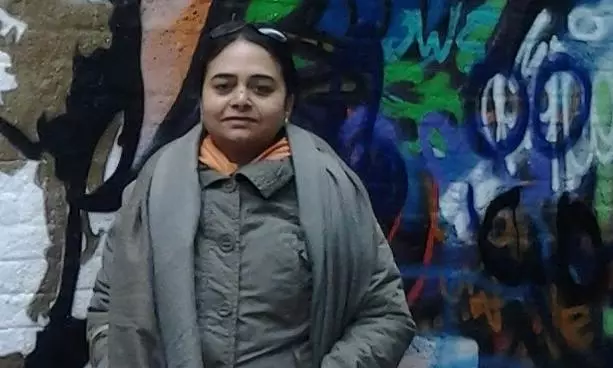Welcome to the flight, I'm your air-hostess, not a nurse

When domestic flights resume on Monday, May 25, the experience is going to be nothing like you knew it to be before the coronavirus lockdown. For one thing, the cabin crew will not be wearing Sabya. More like PPE since we’re talking seriously about a pandemic here.
As per aviation industry sources, cabin crew members on all commercial flights will wear surgical masks, gloves, face shields, gowns or body suits to keep it safe. Airlines IndiGo, Air India, Vistara and AirAsia India have decided to go with the new attire to ensure the safety of their cabin crew given their proximity to passengers during flights.
Shweta Kolekar, an airhostess for Spice Jet, says, “It doesn’t matter what we wear because at the end of the day safety is the first priority. We are fulfilling our duties. It’s the company’s decision.”
Flight attendant attire has always adapted to the work situation. Capt. Roopa, a trainer with a leading airline, said that despite their demanding jobs, flight attendants’ uniforms were designed to be professional rather than comfortable. “A flight attendant’s job is always to first help passengers during an emergency and then to serve them on board. As emergencies and exigencies don’t arise on every flight, their job was seen mainly as glamorous women serving guests aboard. But even though the skin-hugging skirts and heels look chic for service on board, most slip into comfortable footwear,” adds Capt. Roopa.
However, over the years, many airlines adopted conservative workwear looks for their uniforms. “Skirts turned into trousers as long-haul flights in tight skirts became problematic. Similarly, sarees led to churidars with even airlines such as Air India, keeping in mind the ethnicity as well as the fashion quotient. Even so, high-end designers were chosen to design the outfits,” Capt. Roopa says.
Duty comes first
With a pandemic going on right now, the airline industry have had to re-adapt to the times. “The ‘new normal’ in everyone’s life is to sanitise, wear gloves and masks before leaving home,” says Capt. Roopa, who goes on to share that all passengers at the airport for the initial international flights to evacuate people stuck in other countries during lockdown wore gloves, masks and shields, with some even in PPEs. “Attendants are to take complete precaution, so one would find them covered from head to toe. At such times, the sight of a fully covered crew will not be surprising to anyone because they themselves will be covered up quite a bit.”
So, changes to airhostess’ uniforms for the safety of all concerned seems to be hardly an issue. “We are trained to juggle the demands of serving hundreds of passengers while staying calm under pressure,” reminds Swetha.

